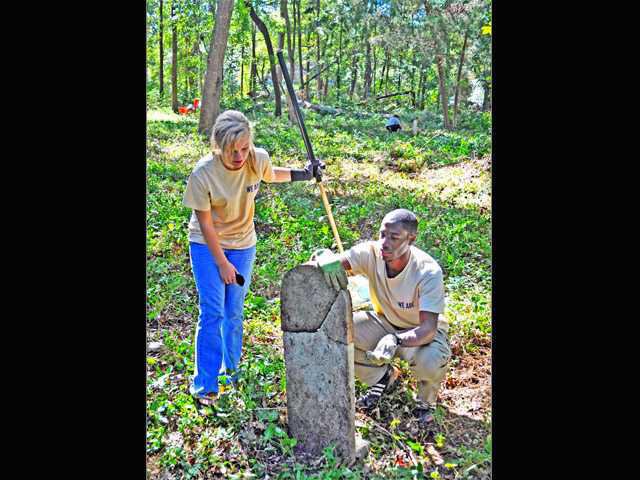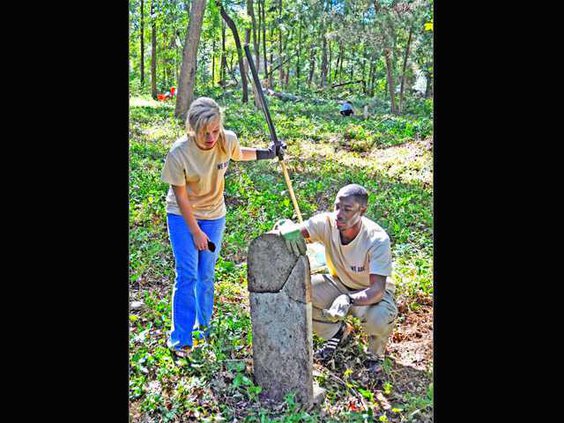Tucked away in the suburban neighborhood of Strathy Hall lies a hidden piece of Richmond Hill’s history. The Strathy Hall Cemetery, which predates the Civil War, is the final resting place of nearly 100 slaves who worked and lived on the Strathy Hall Plantation.
“As it is now, you’d never even know this cemetery was here,” said Elliott Lewis, president of Georgia Southern University’s Anthropological Society. “You can’t see it from the road, and even if you come right up to it, it’s so overgrown that it just looks like a neglected plot of land.”
Intent on changing that, Lewis and 12 members of the anthropological society drove Oct. 20 from Statesboro to help clean and restore the cemetery. They cut down brush, removed trash and uncovered broken grave markers.
“This cemetery is a part of our history and a part of our culture. It needs to be remembered,” said the senior anthropology major from Savannah.
The Richmond Hill Historical Society sponsored the cleanup, and Vice President Christy Sherman helped the students clear the grounds.
“When Strathy Hall was a rice plantation before the Civil War, this was where the McAllister family buried the slaves,” she explained. “It’s been used by their descendents and some of the local African-American churches since. Some of the graves are as recent as 1970.”
According to Sherman, the land’s current ownership is unclear, which has likely contributed to the cemetery’s disrepair and forgotten history.
This isn’t the first time Strathy Hall Cemetery has received a facelift. About 10 years ago, GSU, local churches and county surveyors mapped and surveyed the land, locating graves and removing two centuries’ worth of debris and overgrowth. Since then, however, local interest has declined, and the cemetery has fallen back into disrepair.
Deacon Jacob Grant of Bryan Neck Baptist Church headed the first cleanup committee in the early 2000s.
“We had it in great shape once, but if you don’t keep it up, it’s not going to stay that way,” he said. “I’m glad to hear somebody was down there doing something about it. That’s exactly what we need — someone to get interested in it again and give it the care it needs.”
Grant said many Bryan Neck Baptist Church members can trace their ancestry back to the cemetery. Some still visit the graves of long-dead family members.
Most older graves are unmarked, so it’s unlikely the names of the inhabitants will ever be known. But there are more than 20 graves marked with crudely carved stones bearing names and dates.
“It’s a sad story. It’s one of the oldest cemeteries there is around here, but it hasn’t been kept up or in one piece,” said Grant. “A lot of the graves were moved and destroyed when the subdivision was built. People have just forgotten about it over history. Sometimes that’s the way it goes.”
Sherman said the Richmond Hill Historical Society and the GSU Anthropological Society plan to continue cleanup efforts in the future. They hope to eventually define the cemetery’s boundary lines and to install a fence, sign and walkways on the property. They are seeking volunteers. To find out more, email richmondhillhistoricalsociety@gmail.com.
GSU students clean up pre-Civil War cemetery


Sign up for our e-newsletters